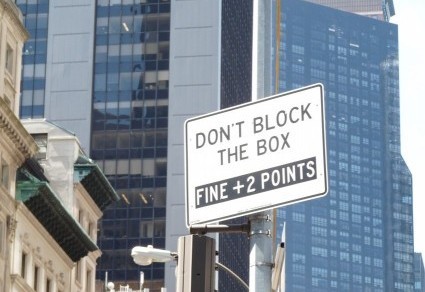Grammar has a bad reputation, which it sometimes deserves, because many grammar rules are just conventions. You wouldn’t misunderstand this sentence if I deleted the apostrophe, would you? But some rules, such as those governing the placement of descriptions, serve a real purpose. That purpose is clarity, which this label lacks:

There’s no cat or chicken in my New York City apartment, so I am clueless about the nature of the product in this photo, which my friend Catherine sent me. So help me out here, cat/chicken fans: Is this FOR or FROM a chicken that lives indoors? Can an indoor cat eat outdoor chicken? Side point: Does the designation kittens to adults mean that this product is intended only for the feline equivalent of a teenager?
The next photo comes from my friend Mary:

I’ve watched Ray’s show and feel confident that she’s neither a cannibal nor a dog killer. Thus I’m not asking law enforcement to find out whether there are any missing Ray relatives, and I won’t petition the SPCA to check on the dog, who appears uncooked and healthy in this photo. However, I wouldn’t mind turning the headline writer over to the grammar police on a first-degree, misplaced-modifier charge.
I also recommend that law enforcement investigate this business, a restaurant in Midtown I glimpsed through a bus window. I was so surprised by the sign that I hopped off at the next stop and walked ten blocks back to double-check:

Pharmaceutical catering? Huh. What exactly is on the menu? Have these caterers given a whole new meaning to “food for thought”? Has the Food and Drug Administration approved the menu? Should the Drug Enforcement Agency get involved?
All this talk of food has given me an appetite. As I tuck into my indoor, completely legal, non-psychoactive lunch, I wish you bon appetit with yours.























 As far as I’m concerned, BOGO all you want. I once thought that the concept of “buy one get one” was an unnecessary statement of the standard deal between buyer and seller. But now I see that most BOGO-users are too busy surfing social media to add an “F,” for “free.” Or maybe they think that BOGOF sounds like a mediocre brand of caviar. I commend this sign-writer for specifying the terms of the deal, spelling out “buy one get one” for “50% Off,” though strictly speaking the sign should read “BOGAOF50%O” (buy one get another one for 50% off). I concede that such a sign resembles the kind of password people concoct and promptly forget. I will, however, raise an objection to “tight.” I prefer to cover both legs with “tights,” not just one with a “FREE tight.” And $75 is a little steep, don’t you think?
As far as I’m concerned, BOGO all you want. I once thought that the concept of “buy one get one” was an unnecessary statement of the standard deal between buyer and seller. But now I see that most BOGO-users are too busy surfing social media to add an “F,” for “free.” Or maybe they think that BOGOF sounds like a mediocre brand of caviar. I commend this sign-writer for specifying the terms of the deal, spelling out “buy one get one” for “50% Off,” though strictly speaking the sign should read “BOGAOF50%O” (buy one get another one for 50% off). I concede that such a sign resembles the kind of password people concoct and promptly forget. I will, however, raise an objection to “tight.” I prefer to cover both legs with “tights,” not just one with a “FREE tight.” And $75 is a little steep, don’t you think?




